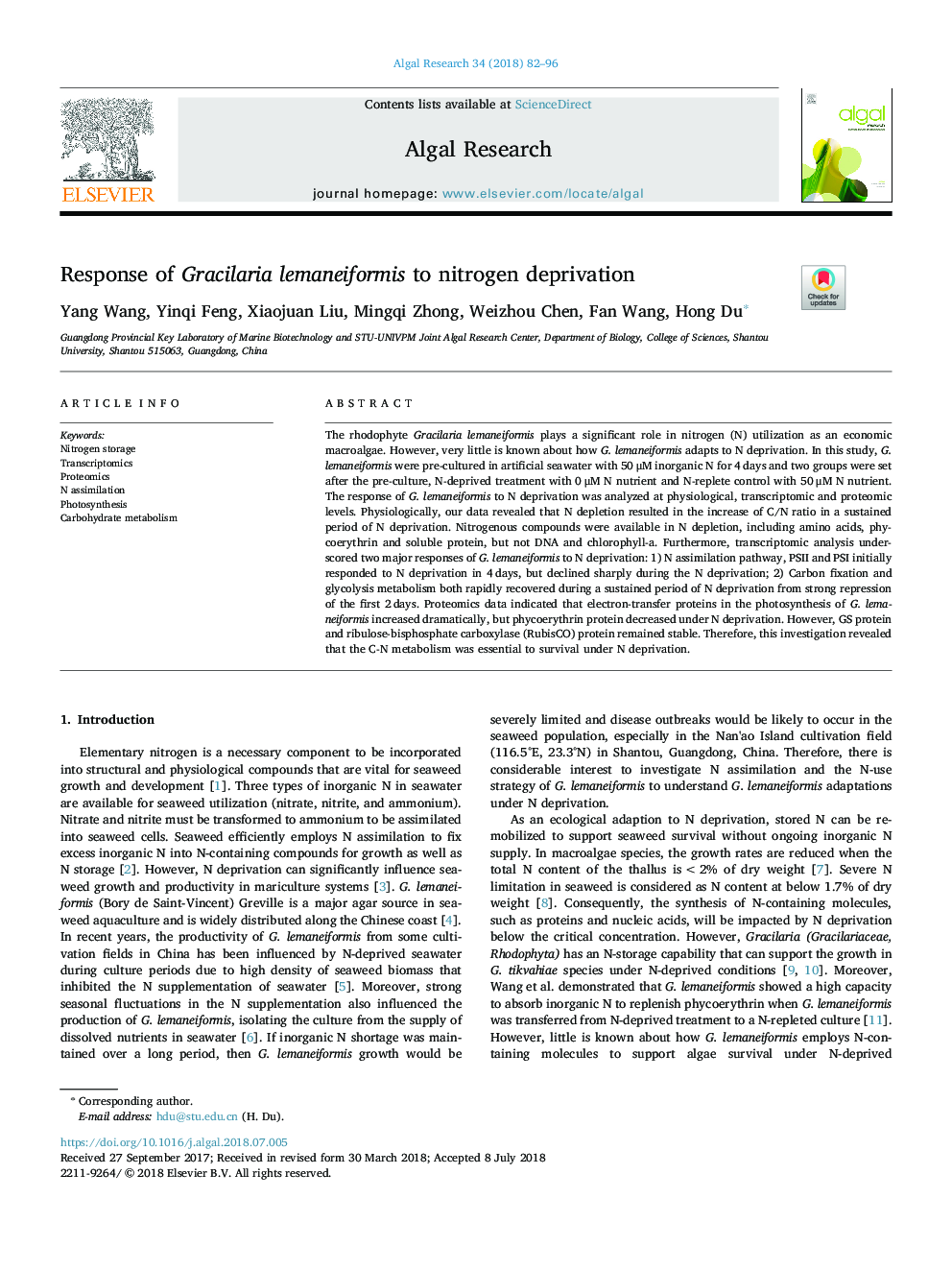| Article ID | Journal | Published Year | Pages | File Type |
|---|---|---|---|---|
| 8085561 | Algal Research | 2018 | 15 Pages |
Abstract
The rhodophyte Gracilaria lemaneiformis plays a significant role in nitrogen (N) utilization as an economic macroalgae. However, very little is known about how G. lemaneiformis adapts to N deprivation. In this study, G. lemaneiformis were pre-cultured in artificial seawater with 50â¯Î¼M inorganic N for 4â¯days and two groups were set after the pre-culture, N-deprived treatment with 0â¯Î¼M N nutrient and N-replete control with 50â¯Î¼M N nutrient. The response of G. lemaneiformis to N deprivation was analyzed at physiological, transcriptomic and proteomic levels. Physiologically, our data revealed that N depletion resulted in the increase of C/N ratio in a sustained period of N deprivation. Nitrogenous compounds were available in N depletion, including amino acids, phycoerythrin and soluble protein, but not DNA and chlorophyll-a. Furthermore, transcriptomic analysis underscored two major responses of G. lemaneiformis to N deprivation: 1) N assimilation pathway, PSII and PSI initially responded to N deprivation in 4â¯days, but declined sharply during the N deprivation; 2) Carbon fixation and glycolysis metabolism both rapidly recovered during a sustained period of N deprivation from strong repression of the first 2â¯days. Proteomics data indicated that electron-transfer proteins in the photosynthesis of G. lemaneiformis increased dramatically, but phycoerythrin protein decreased under N deprivation. However, GS protein and ribulose-bisphosphate carboxylase (RubisCO) protein remained stable. Therefore, this investigation revealed that the C-N metabolism was essential to survival under N deprivation.
Keywords
Related Topics
Physical Sciences and Engineering
Energy
Renewable Energy, Sustainability and the Environment
Authors
Yang Wang, Yinqi Feng, Xiaojuan Liu, Mingqi Zhong, Weizhou Chen, Fan Wang, Hong Du,
